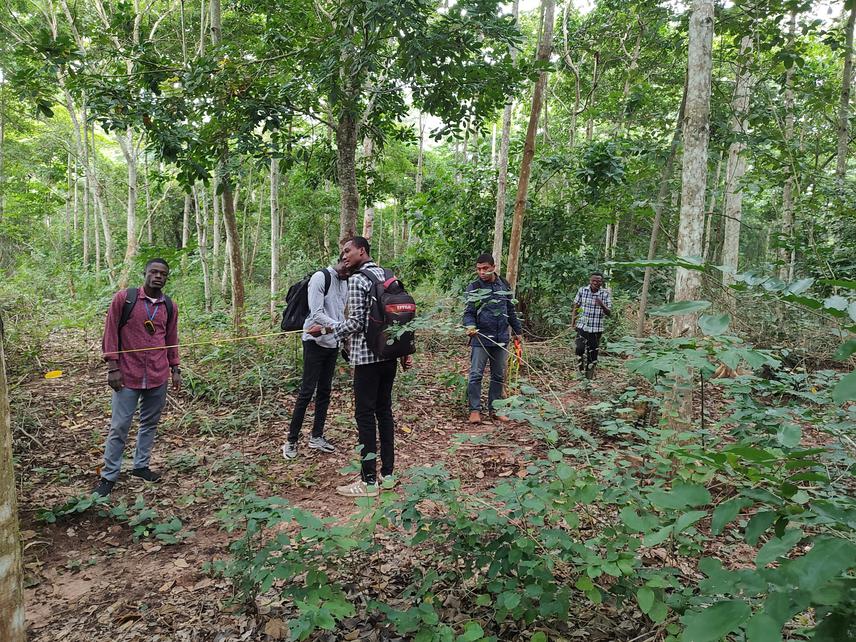Kodjovi Mawuégnigan Léonard Agbodan
Other projects
30 Mar 2022
Diversity and Ethnobotanical Knowledge about Threatened Medicinal Plants in the Guinean Zone of Togo
Forests host most of the Earth's biodiversity and provide ecosystem services that ensure global food security. However, they are under threat and present different structures and compositions due to wide variations in environmental conditions and human interactions. My prior grant allowed for the enumeration of 124 threatened species in Togo's Guinean zone. Focus groups, radio programs, and sharing workshops helped to determine the priority activities necessary to successfully safeguard and reintroduce these resources. Knowledge about usage, threats, vegetation community’s structural characteristics, and suitable area are capital data to ensure sustainable management. This potential solution has sparked interest in this research.

Setting up an inventory plot. ©Meriga Djalole.
Our top-listed threatened species collected are Afzelia africana, Khaya senegalensis, and Vitellaria paradoxa, which, although still present, have become scarce. This research contributes to the protection of these three vulnerable resources in Togo's Guinean zone. Anthropogenic pressure and worsening climate change have significant impacts on these resources. Quantifying and anticipating these consequences is vital for guiding conservation and management activities. Plant formations continue to be the only natural sources of availability. Then, the characterization of these populations is an important step in developing effective conservation initiatives. Therefore, the evaluation of structural and regeneration parameters will help to determine resource availability (seeds), concentration points suitable for silviculture, use level and impact, the dynamics and health of these resources in their biotopes.

Hierarchical stratification of the open forest in the Essin-Godjin (Maritime) area. ©Kodjovi Mawuégnigan Léonard Agbodan.
This study will provide scientific and technical data on the populations, enabling reforestation efforts to be oriented toward effective, efficient, and long-term environmental action. Knowledge about usage (other than medicinal purposes) and threat concerns will aid in conservation efforts and support long-term development. Ecological niche modelling is a low-cost approach to assessing the effects of climate change on vulnerable resources, which is essential to conservation planning. In the context of limited financial resources, this study will examine information on where conservation efforts should be placed for maximum benefit.
It will also allow us to highlighting the effectiveness of the protected areas system in safeguarding plant species and ecosystems, keeping natural carbon sinks, and enhancing population resilience to the effects of climate change. It will help to improve efforts to avoid the deterioration of natural formations that shelter vulnerable species and will contribute to global efforts against climate change in accordance with worldwide objectives 1, 2, 3, 5, and 6 relatives to forests. This study sets out to (i) inventory endogenous uses, (ii) study structural characteristics of stands and (iii) determine current and future ecological niches of three vulnerable forest resources in Togo.
Header: Hierarchical stratification of the open forest in the Essin-Godjin (Maritime) area. ©Kodjovi Mawuégnigan Léonard Agbodan.